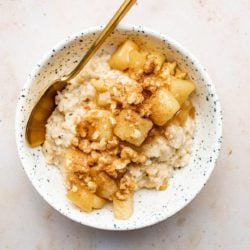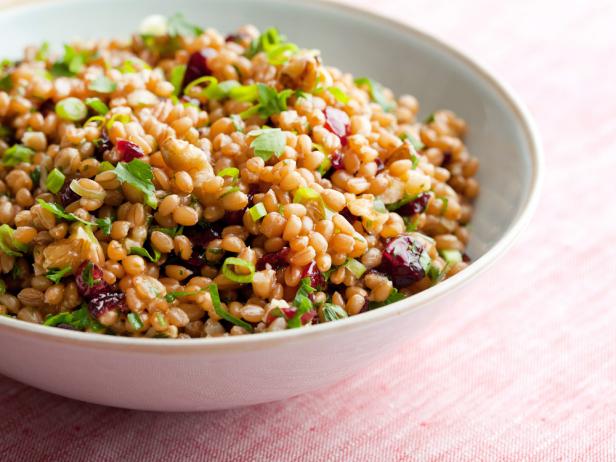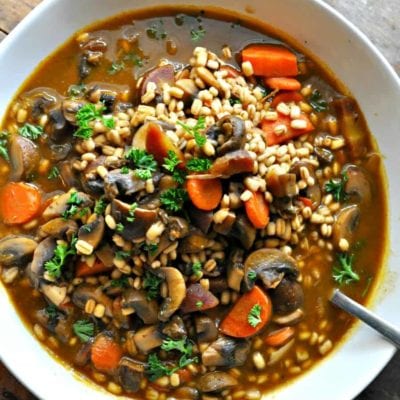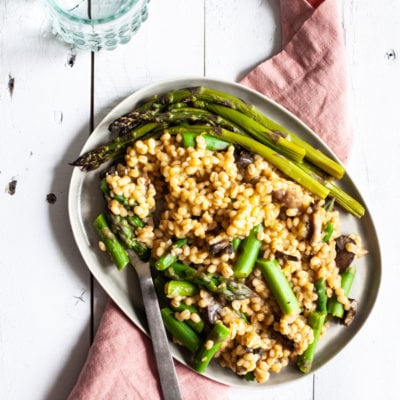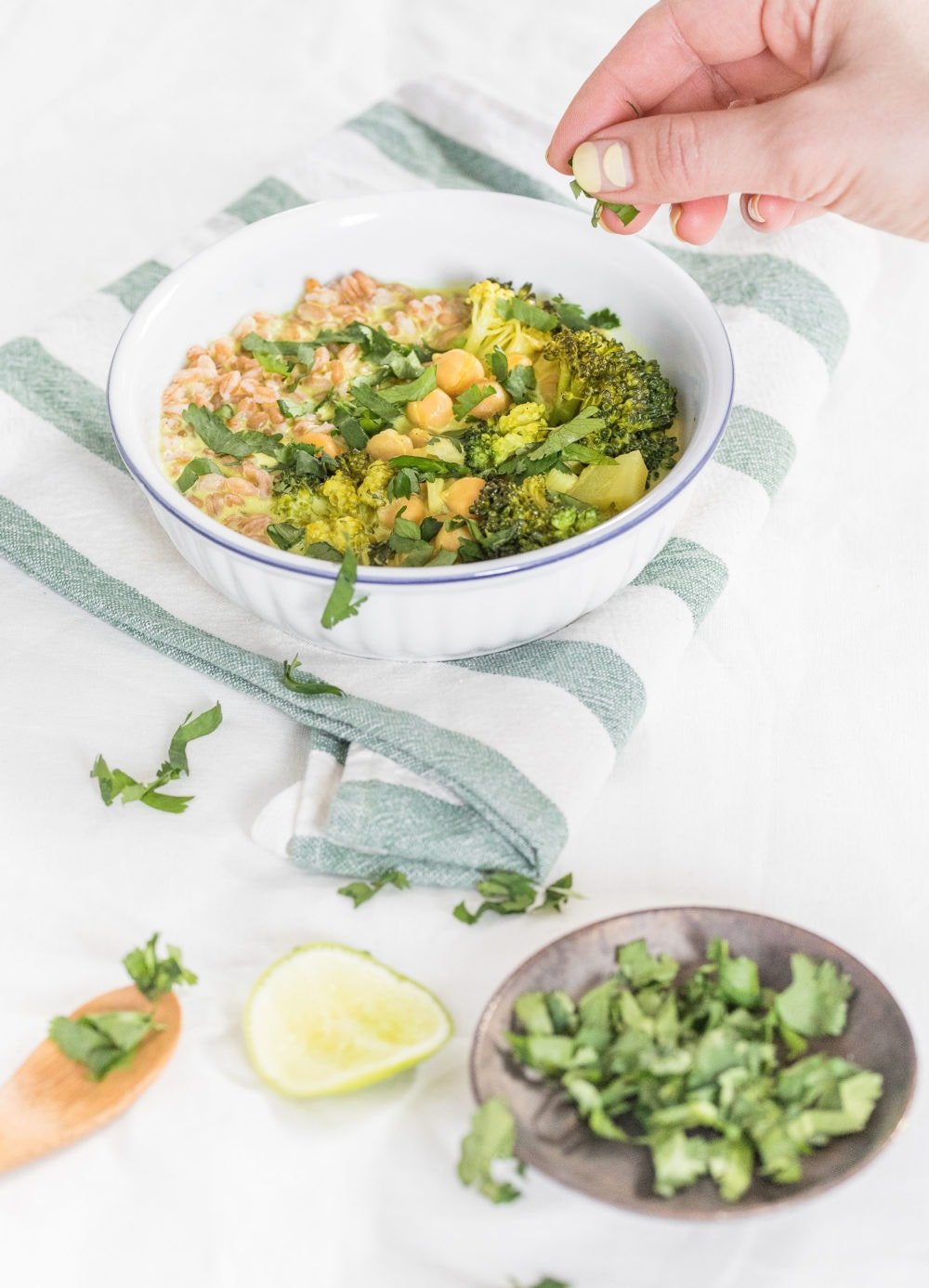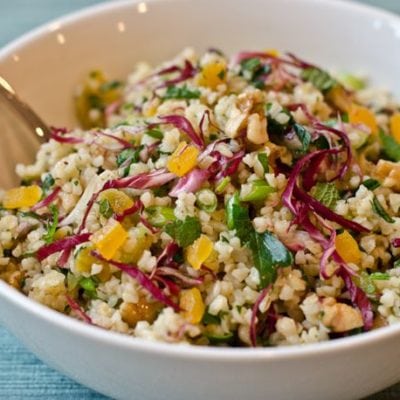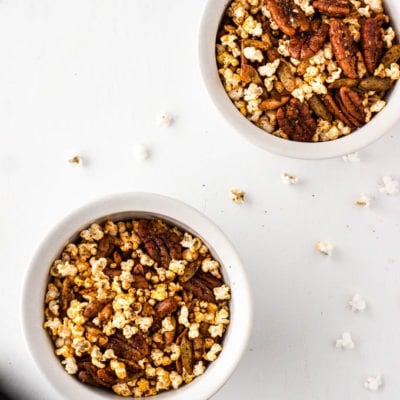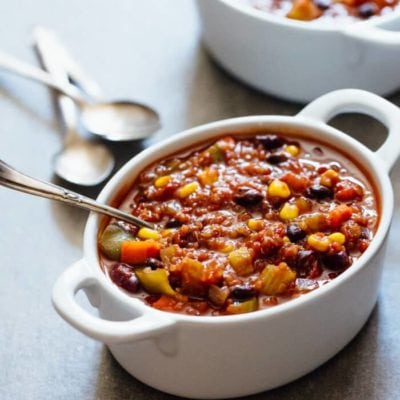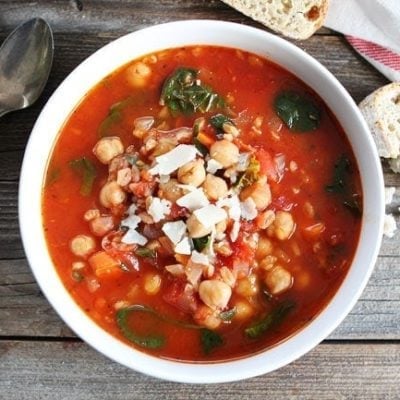11 Healthy Whole Grain Foods (Plus Recipes!)
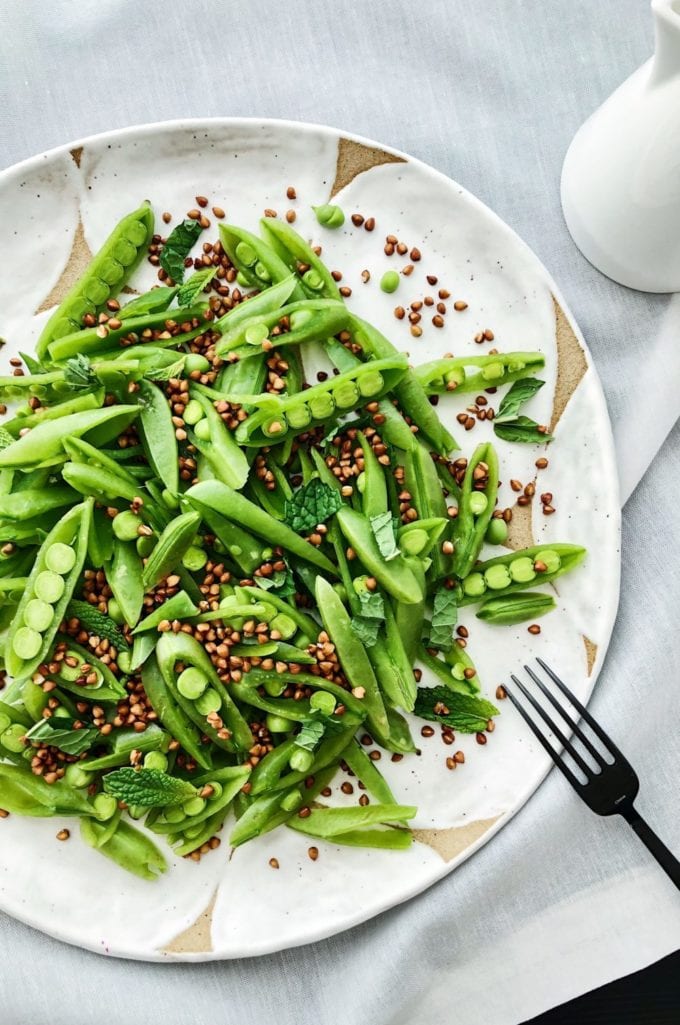
If you’re looking to learn more about whole grains, read on! Find out the answers to a few common questions about whole grains, and look through a list of 11 examples of healthy whole grains. Plus, 12 delicious whole grain recipes to try!

Whole grains are a pretty misunderstood food group, especially considering how (unnecessarily) carb-phobic we all are right now! Let’s be clear: your body was designed to run on carbs. As a registered dietitian and author of Good For Your Gut , a cookbook on gut health, I’ve got to tell you that carbohydrate-containing plant foods are some of our most nutrient-dense choices and the foundation of an anti-inflammatory eating pattern.
Whole grain foods aren’t the only thing with carbs: avocados, lentils, and kale also contain carbohydrates! So really, it’s not about whether or not you eat carbs—it’s about the quality (whole as often as you can!) and quantity (matching to your energy needs and ability to tolerate them). Also, grains aren’t just carbs: they contain plant-based protein, microbiome-boosting fibre and minerals important for a plant-based or vegan diet.
So if you’re here for plant-based diet tips, you’ve come to the right place! For example, soaking grains can be a great way to get optimal use from these delicious meal additions too!
To help clear the confusion, I wanted to share a whole grain foods list (yes, a healthy one!) that you can enjoy on a daily basis. (For my high fibre food list, see this post too!) In addition to these examples of whole grain foods, I’ve got some fun recipe ideas that will help you elevate whole grains beyond a plain boiled side dish. Want ideas for some whole grain foods for dinner? I’ve got you!
Since there’s a lot of information in this post, here’s a handy table of contents to help you get to the goods, fast:
- What are whole grains?
- Whole wheat vs whole grain: what’s the difference
- Is whole grain flour healthy?
- Gluten-containing whole grains list
- Gluten-free whole grains list
- 12 Yummy Whole Grain Recipes
What are whole grains?
We’ve heard the term ‘whole grain’ so often, it can feel like nothing more than a marketing term. And it’s absolutely true that not all ‘whole grain’ foods are that healthy. (I’m looking at you, ‘made with whole grain’ sugary breakfast cereal!) It’s also worth noting that not every single morsel we put into our mouth needs to be super nutrient dense. This dietitian likes her vegan ice cream, licorice and yes, cereal, alongside her nutrient-dense whole foods.
A whole grain food is one that has all three original parts of the grain: the endosperm (inner part), the germ and the bran. So, flours can be 100% whole grain, as long as nothing has been removed. These are a great choice for wholesome home baking (I recommend this whole grain bread recipe from Minimalist Baker!)
Often, I’ll talk about ‘intact’ whole grains. This just means they havn’t be milled, rolled, steamed or otherwise transformed from the original grain as it grows. So an intact form of grain would be wheat berries (also called wheat kernels) or steel cut oats. In contrast, quick oats or whole wheat flour are still considered 100% whole grain.
Whole Wheat vs Whole Grain
While all whole grain wheat flour will be 100% whole wheat, not all whole wheat flour is 100% whole grain. In Canada, up to 5% of the kernel can be removed from milled whole wheat flour and still be called whole wheat, so whole wheat is not always 100% whole grain. It’s pretty close though…not really worth losing sleep over.
Is whole grain flour healthy?
While I absolutely think that whole grain flours have a place in a healthy diet, I think that we tend to consume WAY more flours than intact whole grains in our food culture so I tend to focus on encouraging people to eat more intact whole grains. It’s about more whole foods, not restricting other choices.
What’s more, we tend to be overly focused on eating wheat. Many of us eat wheat 3-6 times a day and few of us eat alternative grains such barley, rye or millet. As long as you tolerate wheat, eating it can be very healthy; however, eating only wheat means we are missing out on the nutrition that is found in eating a variety of grains.
How you cook or process that grain flour also matters. Many whole grain breads are so fluffy and soft that they have a very high glycemic impact on your blood sugars, which isn’t a great idea for those concerned with blood sugars or chronic inflammation. Instead, I tend to recommend my clients look for heavy, 100% whole grain sourdoughs or sprouted grain breads for more fibre, more protein and a lower glycemic index.
While we’re on the topic, I should also mention that whole grain pastas, cooked al dente, are also a great choice on an anti-inflammatory diet. So no dissing pasta, okay?
Here’s a list of 11 healthy whole grains (gluten-free options included), plus 12 whole grain recipes featuring grain as the star of the meal!
Gluten-containing whole grain foods you should eat more of
The internet really fear mongers about gluten…claiming that gluten causes inflammation and gut dysfunction for all. But it’s not true. Yes, some of us don’t do well with it…but others thrive on it! I find in practice that often, it’s about the types of gluten-containing foods we eat (hyper-processed, high sugar, low fibre) than the actual gluten itself.
- Wheat Berries Wheat berries look similar to brown rice, and have a dense, chewy texture and slightly nutty flavour that is super satisfying. Wheat berries also contain more protein and fibre, cup for cup, than quinoa…making it an excellent locally grown grain choice on a plant-based diet.
- Farro, Spelt and Kamut Berries Farro, Spelt and Kamut are ancient cousins of modern wheat; each has a slightly different flavour profile and texture but they are similar to wheat berries. They may be a bit easier to digest for those that are wheat or FODMAP intolerant – but they still contain gluten so they are not suitable for those with celiac disease or non-celiac gluten intolerance.
- Bulgur (Cracked) Wheat Whole grain bulgur is wheat berries that have been cut, or ‘cracked’ into smaller pieces and steamed. A great whole grain substitute for couscous (which is essentially a tiny pasta) in salads like tabbouleh.
- Whole Oats (Groats) Whole oat groats also look similar to wheat berries, and you can use them in a similar way. When they are cut, they become steel cut oats. When they rolled, they become rolled or old fashioned oats, and if rolled finely and steamed, quick or instant oats. Oats are fantastic because of their soluble fibre content, which is very soothing to the gut and helps promote the growth of beneficial bacteria in the gut. Conventional oats do not contain gluten per se, they are however cross-contaminated with gluten. Look for 100% gluten free oats if needed. Just check on the label.
- Barley Barley comes in two forms, pot or pearl. Pot is whole grain and has most of its bran intact, while pearl has been polished (pearled) for longer and lacks the bran. However, barley is also high in soluble fibre, so even pearl barley is a great fibre pick for gut health. Barley has a lighter, milder taste than wheat.
- Rye Rye groats are harder to find, but 100% rye flour is one of my favourite flours. It has a dark, earthy flavour and a light gluten structure – meaning it’s not a straight 1:1 swap for wheat flour in all recipes. It works well in cookies and muffins and quick breads blended with another stronger flour, such as spelt.
Gluten free whole grain foods you should eat more of
Need to be low gluten, or gluten free, due to IBS, an allergy, celiac disease or non-celiac gluten sensitivity! Don’t give up on whole grains! There are plenty of wonderful, nutrient-dense gluten free whole grains for you to choose from.
NERDY FYI: Most gluten free grains such as buckwheat, quinoa and millet are not true grains, they are actually seeds that we cook like grains.
- Quinoa Quinoa is probably the most popular gluten free grain after rice, well known for its ‘complete’ amino acid profile. However, people often mistake quinoa for being high in protein. In fact, one cup of cooked quinoa only has 8.5g of protein – excellent as a grain, but not enough to carry an entire meal…you probably still want some legumes, hemp hearts or tofu to round out the meal. Heads up, I find quinoa flour quite bitter, not an easy one to bake with.
- Black, Brown, and Red Rice Rice is a staple the world over; however, you might be surprised to learn that brown rice isn’t really that high in fibre. One cup of cooked brown rice has just 3 grams of fibre. Still delicious though! For more stable blood sugars, look for long grain basmati or jasmine rice as the starch structure varies in different rices and basmati or jasmine have a lower glycemic impact. I also really like black and red rice for their chewy textures and flavour. Also, I know this is a post about whole grains but I’ve gotta say, if white rice is a cultural staple for you, enjoy it! Don’t let any dietitian tell you it can’t be part of a healthy diet. Just get your fibre somewhere else, like more legumes or vegetables!
- Millet Millet is probably my favourite gluten free grain these days. It has a milder, wheat-ier flavour than quinoa and a fluffier texture that works well in a variety of dishes. It’s slightly lower in protein than quinoa, at 6.5g per cooked cup but boasts a variety of minerals such as iron, zinc and potassium.
- Buckwheat Groats The confusingly named buckwheat has nothing to do with actual wheat; it is the seed of a plant related to rhubarb! Buckwheat flour is dark in colour and richly flavoured and is a common ingredient in pancake and crepe recipes. You can also toast buckwheat groats for a crunchy addition to salads, or cook it as a grain.
- Sorghum A true gluten free cereal grain, sorghum can be found in groats but is most commonly used as a flour. It has a lovely texture that approximates wheat flour in baking, and is great when blended with millet or rice flour. Sorghum is similar in protein content to quinoa and boasts more minerals than millet.
12 Yummy Whole Grain Recipes to Make Now
Whole grains have such an incredible variety of textures and flavours, they are worth making them the star of your meal!
15-Minute Vegan Apple Pie Oatmeal
Wheat Berry Salad | Ellie Krieger RD
Hearty Mushroom & Barley Soup (Vegan)
Vegan Barley Asparagus Mushroom Risotto | The Full Helping
Easy Chickpea Coconut Milk Curry
Bulgur Salad With Apricots, Radicchio, Herbs, and Walnuts Recipe
Nourishing Farro Pesto Pilaf
Chili-Lime Popped Sorghum (Gluten-Free, Vegan) – Salted Plains
Italian Farro Salad with Arugula
Best Quinoa Chili – A Couple Cooks
Chickpea Farro Soup Recipe

Whole Grain Recipes: Snap Pea Salad with Roasted Buckwheat
Ingredients
Salad
- 1 pound sugar snap peas, sliced
- ¾ cup dry buckwheat groats
- ⅓ cup fresh mint leaves, thinly sliced
- 1 tablespoon extra virgin olive oil, or avocado oil
- ¼ teaspoon salt
Ginger Cashew Dressing
- ¼ cup cashew butter
- ¼ cup freshly squeezed lime juice
- 2 tablespoons water
- 4 teaspoons freshly grated ginger
- 2 teaspoons sesame oil
- ½ teaspoon salt
- pinch dried chile flakes
Equipment
- bullet or immersion blender
Instructions
- Preheat oven to 350° Fahrenheit (175° Celsius). Prepare a rimmed baking sheet with parchment paper.
- In a small bowl, toss buckwheat with olive oil and 1/4 teaspoon salt. Spread on baking sheet and place in oven.
- Roast for 15-16 minutes, until buckwheat is a deep golden colour, stirring half way through cooking as the edges will roast faster than the middle. Remove from oven and set aside.
- Meanwhile, mix up the dressing. Add the cashew butter, lime juice, water, ginger, sesame oil, maple syrup, salt and chile flakes to a wide mouthed jar and blend with an immersion blender until smooth.
- To assemble, arrange the snap peas, buckwheat and mint in a shallow serving dish. Drizzle with dressing and serve.

